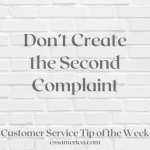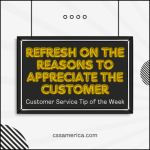
In Human Resources circles, a word that has become ubiquitous (which – by the way – is also ubiquitous) is “onboarding.” One way to define onboarding is that it’s the process of getting a new hire acclimated to their role as an employee. It’s also defined as “organizational socialization.” It enables new hires to get the knowledge, skills, and behaviors to have a successful transition into your business as effective employees.
While I’m not an expert on employee onboarding, I liken the concept to what we often recommend – let’s call it Client Onboarding.
When you have a new customer or client, if you are a long-term thinker, one who views the customer through the lens of their lifetime value as opposed to their one-time transaction, then it helps you to paint a picture of what Client Onboarding should entail.
If this new client of yours is one you want to keep for a long-time, over many years and transactions, consider these questions:
- What can you learn about them today that would help you to better serve them tomorrow?
- How can you ensure they have a good enough experience in this transaction that they’ll want to come back a second time?
- What can you share with them that will help them to know how to navigate your services or processes more easily in the future?
- Who or what do they need to know in your organization to begin forming the more social or personal relationship with your people and your business?
- What can you do with the environment so that it becomes more comfortable, self-evident, and familiar to them in a next visit?
- What can you do to solicit their feedback so they feel their voice is important and so you learn what’s important to them?
- How do you convey the appreciation that makes them feel valued in their ongoing relationship with you?
While these were just seven questions, notice the common thread in each…that thread is the future. The references to tomorrow, second time, future, and ongoing. The discussion of begin forming, become, and next.
Get your clients onboard. Be intentional about what you need to do to get a long-term journey started with them.
Enable “organizational socialization” for your clients.























